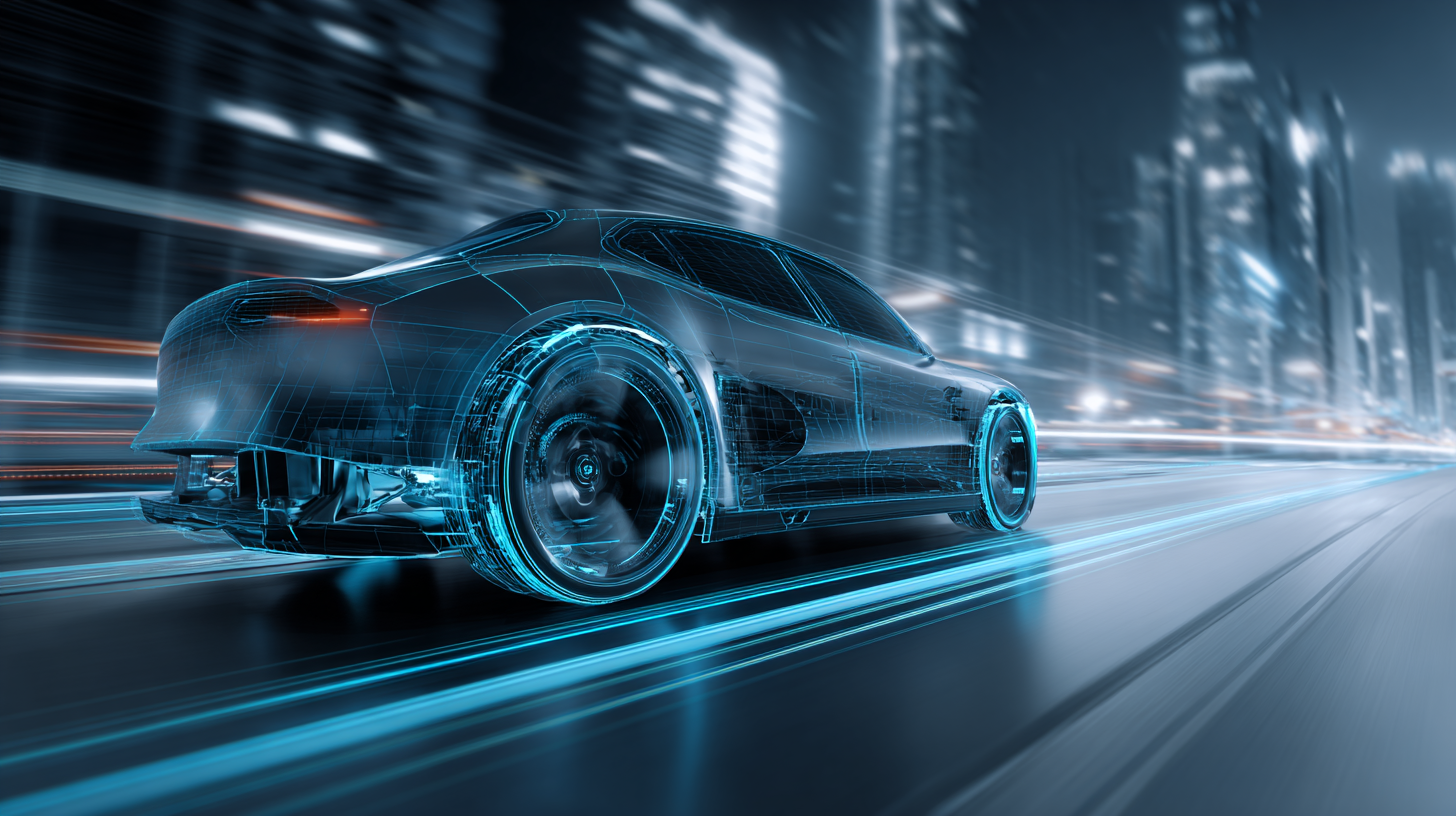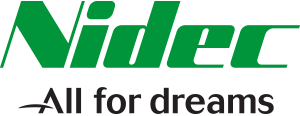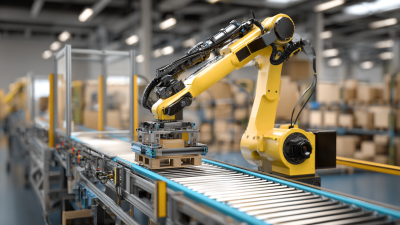Revolutionizing Efficiency How Drive Technologies Impact Modern Transportation Systems
In the rapidly evolving landscape of modern transportation systems, the integration of drive technologies is proving to be a game changer in enhancing operational efficiency and sustainability. According to a report by the International Energy Agency, electric vehicles, which heavily rely on advanced drive technologies, accounted for nearly 10% of global car sales in 2021, reflecting a substantial shift towards cleaner transportation solutions. Furthermore, the World Economic Forum highlights that innovations such as autonomous driving systems and smart logistics powered by these drive technologies could potentially reduce urban traffic congestion by up to 30%, significantly improving travel times and reducing carbon emissions. As we explore the transformative impact of drive technologies, it becomes evident that their application is not just a trend but a necessity for modernizing transportation infrastructures, optimizing energy consumption, and ultimately paving the way for a more connected and efficient future.

The Role of Electric Drive Technologies in Reducing Transportation Emissions by 40%
Electric drive technologies are at the forefront of revolutionizing modern transportation systems, significantly contributing to the reduction of transportation emissions. By harnessing the power of electric motors, these technologies can optimize energy efficiency and minimize the ecological footprint of vehicles. With advancements in battery technology and charging infrastructure, electric vehicles (EVs) can now provide a cleaner and more efficient alternative to traditional internal combustion engines. This shift not only promises lower greenhouse gas emissions but also enhances air quality in urban areas, addressing critical public health concerns.
Studies indicate that with widespread adoption, electric drive technologies could effectively reduce transportation emissions by up to 40%. This transformation is fueled by increased consumer awareness about environmental issues and the economic benefits of electric mobility. Moreover, as governments worldwide set ambitious climate goals, the adoption of these technologies is essential for meeting regulatory standards and fostering sustainable transportation solutions. The integration of electric drive systems in public transport, personal vehicles, and freight logistics highlights their versatility and the pivotal role they play in achieving a more sustainable future.

Transforming Urban Mobility: The Impact of Autonomous Drive Systems on Traffic Efficiency
The advent of autonomous drive systems is set to dramatically transform urban mobility and traffic efficiency. As reported, the global market for robotaxis is projected to soar from USD 4.43 billion in 2025 to nearly USD 188.91 billion by 2034, underscoring the rapid growth and integration of autonomous vehicles into urban landscapes. These connected systems redefine traffic management by optimizing routes and communication among vehicles, traffic lights, and pedestrians, effectively minimizing congestion during peak hours.
Furthermore, cities like Masdar City exemplify the integration of autonomous electric transport and smart mobility technologies aimed at achieving sustainability. By adopting pedestrian-first planning and implementing AI-driven traffic systems, cities can not only enhance efficiency but also contribute to carbon-neutral goals. With AI playing a pivotal role in optimizing traffic flow and enhancing public transport services, urban mobility is on a path towards a more efficient, sustainable future.
Cost Savings through Vehicle Electrification: Analyzing 30% Lower Operating Costs in Public Transit
The transition to electrification in public transit has become a focal point for enhancing operational efficiency and reducing costs. With the integration of electric vehicles (EVs), transit authorities are witnessing a remarkable transformation that leads to operating cost reductions of up to 30%. This significant decrease can be attributed to lower fuel costs, reduced maintenance expenses, and decreased reliance on traditional energy sources. As electric buses and trams become more prevalent, their operational benefits manifest not only in savings but also in improved reliability and service quality.
Moreover, electrification promotes sustainability, aligning with global efforts to reduce carbon emissions. By adopting electric technologies, public transit systems can contribute to cleaner air and a healthier urban environment. The initial investments in EV infrastructure are often offset by the long-term savings and operational efficiencies that electrified fleets provide. As cities prioritize modernization and resilience in transportation, electrification of public transit stands out as a powerful catalyst for economic and environmental progress.
Impact of Vehicle Electrification on Public Transit Operating Costs
This chart illustrates the operating costs per mile for conventional and electric vehicles in public transit. Electrification can lead to significant cost savings, with electric vehicles showing a reduction of 30% in operating costs.
Data-Driven Analytics: How Smart Drive Systems Enhance Fleet Management and Route Optimization
Data-Driven Analytics plays a crucial role in enhancing fleet management and route optimization through smart drive systems.
By leveraging advanced algorithms and real-time data collection, companies can monitor vehicle performance and driver behavior with unprecedented accuracy.
For instance, telematics solutions gather location, speed, and fuel usage information, which is then analyzed to streamline operations.
This not only reduces operational costs but also improves service reliability, allowing companies to respond swiftly to changing circumstances.
Moreover, route optimization is significantly transformed through data-driven insights offered by smart drive technologies.
Utilizing predictive analytics, these systems can evaluate traffic patterns, weather conditions, and historical data to suggest the most efficient routes.
As a result, fleet operators can minimize delays, enhance delivery times, and reduce carbon emissions.
By implementing these technologies, businesses can achieve a higher level of operational excellence, making transportation systems not only more efficient but also more sustainable in the ever-evolving landscape of modern logistics.
Integration of Drive Technologies: The Future of Sustainable and Smart Transportation Networks
The integration of drive technologies is poised to redefine the landscape of modern transportation networks. By leveraging advanced electric propulsion systems, autonomous vehicles, and smart grid technology, cities can develop integrated transport solutions that are not only efficient but also environmentally friendly. These innovations pave the way for seamless connectivity among various transportation modes, including buses, trains, and personal vehicles, ultimately reducing congestion and improving urban mobility.
Moreover, the shift towards sustainable drive technologies enhances energy efficiency and lowers greenhouse gas emissions. For example, electric vehicles (EVs) contribute to cleaner air and decreased reliance on fossil fuels, while intelligent traffic management systems optimize route planning and reduce idle times. As smart transportation networks continue to evolve, their ability to adapt and respond in real time will enable them to meet the ever-increasing demands of urban populations. Therefore, the future of transportation lies in the thoughtful integration of cutting-edge drive technologies, creating smarter, more sustainable solutions for the challenges ahead.










